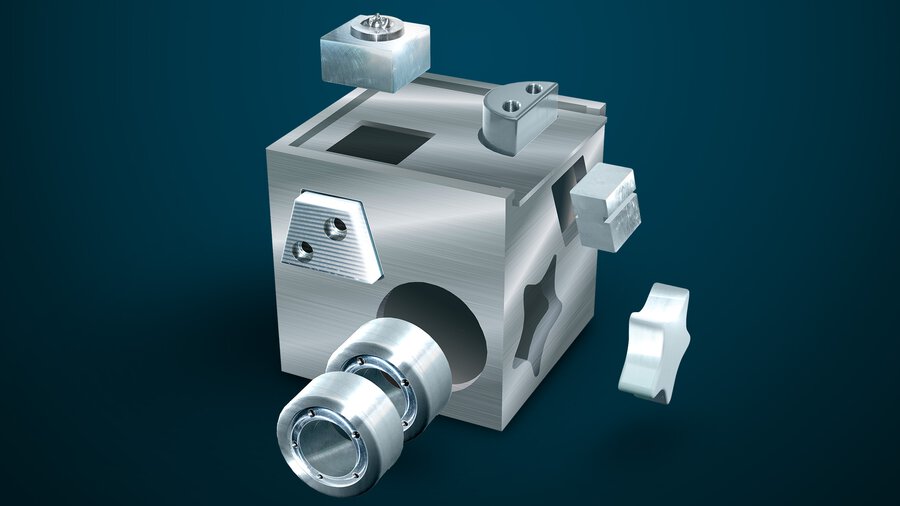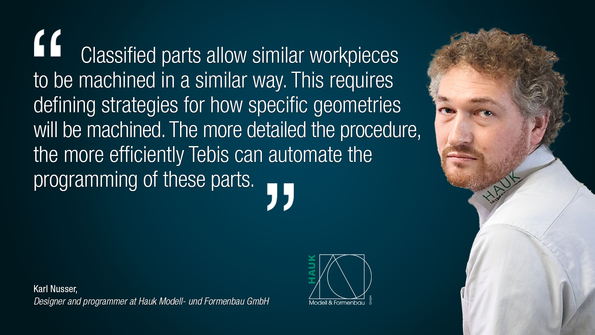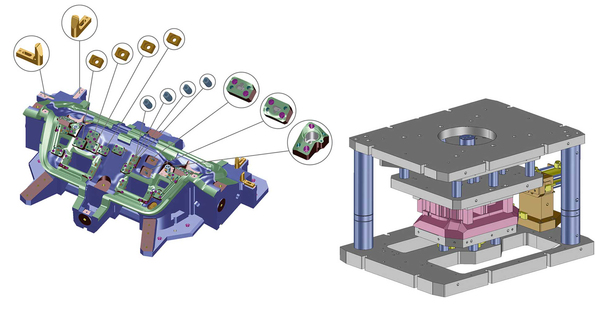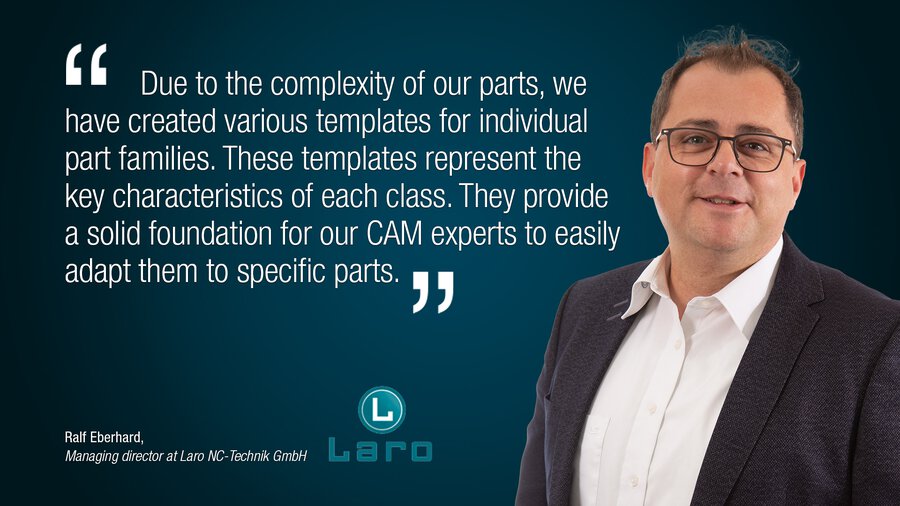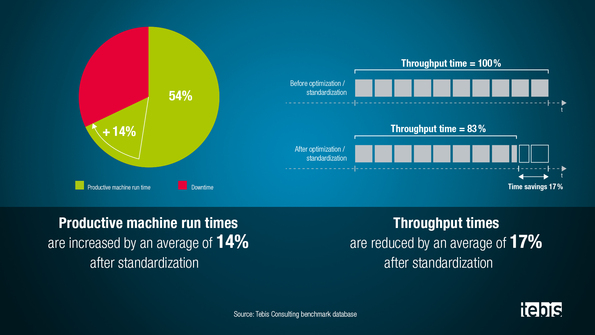Part classes: Nine steps for more efficient manufacturing from the bottom up
Part classes are standards making them ideal for time-savings of up to 95% across all process stations. If you consider that standardizing by just 20% significantly increases efficiency in manufacturing, you’ll see that this approach can lead to quick and impactful results.
→ Why subdivide parts into classes?
→ The nonindustry-specific principle of part classes
→ Features you can use to classify parts
→ More refined classification = greater efficiency potential
→ Part classes improve cost effectiveness
→ What you need to know before classifying parts: Nine steps of part classification
What do dies for a rear hatch and a side door have in common in manufacturing? Not much, at first glance; the results appear to be completely different. This impression is reinforced by the individual hand notes in CAD preparation and CAM programming: some quick and pragmatic, others artistically elegant or clumsily improvised. It appears as though nothing could be standardized – but appearances can be deceptive. Even in single-part and small-series manufacturing, there are similarities and commonalities in parts.
For the simplified example of the image of a cube, this means: Whether the trapezoid is larger or smaller and has two or five holes, or whether the star has five or eight points – these small differences will only make minimal differences in the manufacturing process. We can take advantage of this principle to manufacture more efficiently With this example, my colleague has clearly pointed out that just one CAD template is required to automatically prepare similar parts based on their similarities.I'll go one step further and show you how to find and structure these part classes.
Why classify parts? Every increase in efficiency provides competitive benefits and increases your future viability. Part classes or part families are powerful tools that have a positive impact on efficiency across the entire manufacturing process. There's more: Part classes as standards are THE vehicle on the path to automation – in the future.
Part classes are often known as "part families" (cf. (REFA) or variant groups. Establishing part standards at the start of the process chain positively impacts the entire downstream process. Parts that are already clustered based on similarities and relationships always follow the same route through CAD, CAM and manufacturing.
If the designer is already working with defined part classes, they’ll include the most important features from the start and will be automatically applied in subsequent processes.
The nonindustry-specific principle of part classes
Simplified based on the above example: A sheet metal die – whether it’s for a rear hatch or a side door – is made up of various parts. They in turn include several with commonalities, similarities and relationships. Here are some simple examples for extremely rough clustering
- The same material or blank
- The same machining tools
- The same machines
So an employee who’s classifying parts by material will use the same standard machining tools with their stored parameters – ensuring machine safety and time-savings.
Classifying by materials is a first step. To increase efficiency, you'll need to look for additional similarities and recurring relationships. The secret lies in recognizing finer patters and using relationships so you can use variants. The combination of individual patterns often plays a decisive role in creating more efficient manufacturing processes.
I've seen countless possibilities and ways that build on each other for manufacturers to cluster their parts in a wide range of industries. From the geometry to the tool or the part: The principle of part classes works as a standard across industries. What’s important is for the classes to be adapted to your specific processes and manufacturing portfolio. You’re the one who knows these best.
Finer classification = greater potential for efficiency
The way you generate your classes also affects efficiency. This is neither good nor bad; it all depends on the goal you want to achieve. Part classes with more in-depth commonalities, like similarities in design and geometry or the same machining sequences. Repetitive procedures can also be standardized with CAD and CAM templates. Identify common features that allow you to easily detect similar parts to establish standardized processes.
Without standardization, optimal processes are based entirely on chance: Individual processes that can’t be repeated lead to wasted time and money. In contrast, standardized processes always include the same sequence of actions that are generally recognized and achieve the same result.
And it's beneficial to develop your standardization step by step so you can capture quick wins. Standardizing even 20% of processes can significantly enhance efficiency boosting the overall cost-effectiveness of your manufacturing. As a general rule, standardization of 60 to 80% in a company is considered outstanding.
Part classes improve cost effectivenessAs I stated in the beginning, part classes are a basic prerequisite for automating your manufacturing process. Understanding this will double your benefit, you to manufacture up to 95% faster.
Part classes may be relatively unique depending on a company's industry, portfolio and efficiency objective. But there are still standard steps that Tebis Consulting takes in customer projects. Download the nine steps to see how you can approach part classification. Give it a try, because once you've grasped the principle, you can continuously develop and optimize it. Laro and Hauk Modell- und Formenbau are just two successful examples. Try it for yourself!
Request our checklist and learn how you can improve the efficiency potential of your manufacturing step by step.

Our blog author:

I’ve experienced the world of die and mold manufacturing from many perspectives over the past 30 years or so: As a CAM programmer, I wanted to get the best out of the part; as a production manager, I had to keep the entire production chain running; and as a deputy managing director, I was interested primarily in value creation and profitability. Now as a consultant with a "neutral" outside perspective on internal processes, I help companies survive and thrive in the market:
This entails coordinating the ideas of all those involved in the process, working out the special features and strengths of the company and making optimal use of modern operating resources like machines and tools and powerful CAD, CAM and MES software systems.

